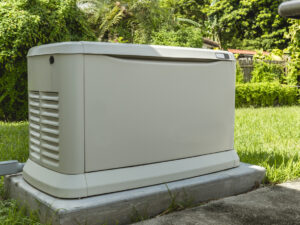
When the power goes out, a backup generator keeps your home running smoothly. But have you ever wondered exactly how these machines work? Let's break down the process of how a backup generator works, from detecting power outages to keeping your lights on.
The Basic Principles of Backup Power
At its core, a backup generator converts mechanical energy into electrical power through a process called electromagnetic induction – the same principle that powers large electrical plants. The main difference is that your backup generator sits right next to your house, ready to take over when utility power fails.
1. The Automatic Transfer Switch: Your Generator's Brain
The key to how a backup generator works lies in its automatic transfer switch. This device constantly monitors your home's connection to the utility power grid. When it detects a power outage, it springs into action, performing two crucial tasks: it disconnects your home from the utility lines (preventing dangerous backfeeding) and signals your generator to start up.
2. Starting the Power Generation Process
When your backup generator receives the signal to start, several things happen in quick succession. First, the engine turns on, powered by either natural gas, liquid propane, or diesel fuel. As the engine runs, it turns an alternator – essentially a large magnet spinning inside copper coils – which generates the electricity your home needs.
3. Converting Fuel to Power
The process of turning fuel into usable electricity involves several steps. Your generator's engine runs at a specific speed (usually 3600 rpm) to produce the correct frequency of electrical current (60 Hz). The alternator then generates electricity at the proper voltage for your home's electrical system, typically 240 volts for most household generators.
4. Powering Your Home's Circuits
Once the generator produces electricity, it flows through your home's electrical panel. Depending on your setup, the generator either powers specific essential circuits or your entire home. A whole-house generator typically provides enough power to run your air conditioning, heating, refrigerator, lights, and other important appliances simultaneously.
Built-In Safety Features
Modern backup generators include several safety mechanisms. They monitor oil pressure, temperature, and speed to prevent damage to the unit. If any readings fall outside normal ranges, the generator will shut down automatically. They also include carbon monoxide detectors and automatic voltage regulation to protect your home's appliances.
The Shutdown Process
When utility power returns, the transfer switch detects the restored service. It then begins the shutdown sequence: first switching your home back to utility power, then running the generator for a short cooling period before turning it off completely. This process helps protect both your home's electrical system and the generator itself.
Regular Operation Cycles
Even when not in use, your backup generator performs weekly self-tests to ensure it's ready when needed. During these tests, the generator briefly starts up and runs through its systems, but doesn't actually power your home. This regular exercise keeps the engine lubricated and helps identify any potential issues before an actual power outage occurs.
Weather Protection
Modern backup generators are built to operate in almost any weather condition. They include weather-protective enclosures that shield the internal components from rain, snow, and debris while allowing proper airflow for cooling and engine operation.
Need help installing or maintaining your backup generator? Contact Home Power Systems at (716) 314-1743. Our experts can help you choose, install, and maintain the right generator for your home. We’re the trusted choice for generator installation in Western and Central New York!



